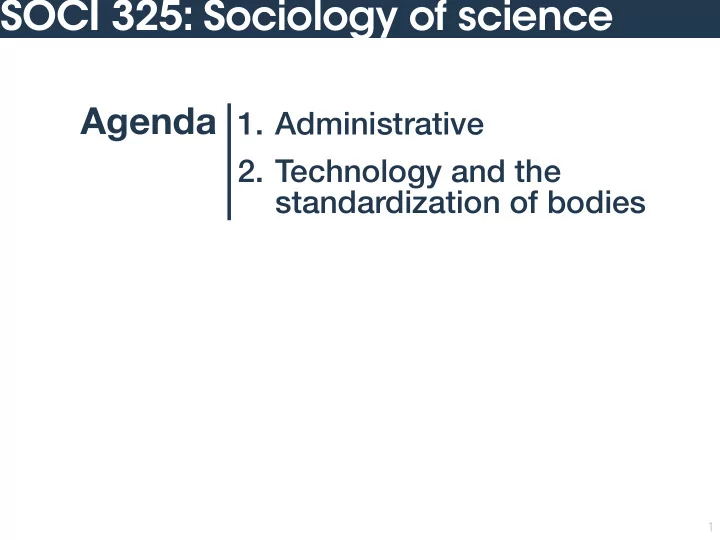

SOCI 325: Sociology of science Agenda 1. Administrative 2. Technology and the standardization of bodies 1
Administrative Posters ⦙ Posters are due next Thursday, April 9 by 11:59pm. ⦙ You will receive four peer-evaluation assignments on April 10. ⦙ Peer evaluations are due Thursday, April 16 (worth 5% of your total course grade) Evaluation criteria ⦙ Knowledge and presentation of the topic (20%) ⦙ Clarity and strength of argument (24%) ⦙ Engagement with course themes (24%) ⦙ Clarity of visual presentation (16%) ⦙ Appropriateness of references (16%) 2
Technology and the standardization of bodies 3
Technological determinism Technology driving society ⦙ Technological determinism (TD) is the idea that technological change drives social change . ⦙ TD is fundamental to many Marxist analyses in which material conditions shape class relations. ⦙ TD relies on the idea that technologies embody certain essential features (a positivist or realist stance) Original 1794 patent for Eli Whitney’s cotton gin, a device that maintained the profitability of chattel slavery in the United States source: Wikimedia 4
Social construction of technology Social construction of technology (SCOT) ⦙ Trevor J. Pinch and Wiebe E. Bijker (1984) ⦙ All technology is subject to interpretive flexibility . ⦙ The use and inherent meaning of a technology depends on the relevant social group(s) that use the technology. ⦙ Existing ‘problems’ a ff ord many di ff erent technical solutions. The ‘best’ solution depends on social/cultural/political context of the relevant social group. ⦙ Technologies can be used for di ff erent purposes. Can cause conflict over the ‘appropriate’ use of a technology. Image source: Wikimedia 5
Social construction of technology SCOT: ⦙ Technology conforms to social systems. Technology and E.g. AI and race (Benjamin 2019) society co-constitute ⦙ Social systems are influenced by technology. E.g. genetic testing on race and identity (TallBear 2013) 6
Social construction of bodies SCOT and standardization of bodies Technology is tied to how we fundamentally understand our selves and our bodies . Race and gender (Herzig 1999) ⦙ The ‘meaning’ of body hair and its relationship with race and gender is inextricable from the technologies for the alteration, removal, and measurement of body hair. Disability (Woods and Watson 2004) ⦙ What is understood as a ‘normal’ versus ‘abnormal’ body is bound to the existence and implementation of technologies. (e.g. glasses, wheelchairs) 7
Discussion and Next class Discussion ⦙ Discussion questions available at https://soci325.netlify.com/discussion_questions/10.02.docx Next class: ⦙ Required : TallBear (2013), Genomic articulations of indigeneity ⦙ Supplementary : Winner (1980), Do artifacts have politics? 8
Recommend
More recommend